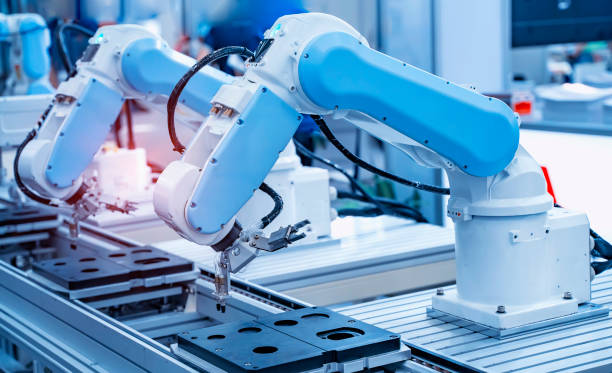Robotic arms have come a long way from their original conception several decades ago. Back then, they were seen as nothing more than eerie replicas of human arms used for repetitive tasks in motors and other industries—but today, advancements in robotics technology are allowing robotic arms to be considered revolutionary tools across an ever-growing range of applications.
From assisting surgeons in delicate medical operations to helping assemble everyday products like smartphones with incredible precision and speed, the future potential of robotic arms is unprecedented. But what else can these versatile machines do? In this article, we’ll look at some potentially game-changing trends and emerging widespread applications of robotic arm technology — so read on if you want to explore the exciting possibilities.
Overview of Robotic Arm Technologies
Robotic arm technologies have become increasingly popular in recent years and continue to revolutionise the world of manufacturing and industry. A robotic arm typically consists of a series of joints that together enable it to mimic the movements of a human arm. These incredibly versatile machines can perform various tasks, from simple pick-and-place operations to more complex assembly and welding tasks.
Some critical technologies that have contributed to the development of robotic arms include advances in sensors, actuators, controllers, and vision systems. Whether working in a factory, a laboratory, or even outer space, robotic arms have become an essential tool for engineers and technicians alike, helping to make processes more efficient, accurate, and reliable. The future seems bright for robotic arm technologies as they evolve and expand their capabilities.
How Robotic Arms are Beneficial for Manufacturing and Industrial Processes
One of the critical reasons for the increasing popularity of robotic arms in manufacturing and industrial processes is their ability to automate repetitive tasks with precision and speed. It helps save time, reduces labour costs, and minimises human error. Robotic arms can perform these tasks around the clock without any breaks or fatigue, making them an ideal solution for high-volume production lines.
Another significant advantage of robotic arms is their flexibility and adaptability. With advanced sensors and programming, these machines can easily switch between different tasks and handle a variety of materials, shapes, and sizes. It enables manufacturers to quickly reconfigure their production processes without investing in new equipment. Consequently, this leads to higher levels of productivity and efficiency.
Trends in Robotic Arm Design
One of the most notable trends in robotic arm design is integrating artificial intelligence (AI) and machine learning. By incorporating these technologies, robotic arms can become more innovative and intuitive, enabling them to perform tasks more accurately and adapt to changing environments. It opens up new possibilities for applications in fields such as healthcare, transportation, and even consumer products.
Furthermore, there is a growing trend towards developing collaborative robotic arms, also known as cobots. These robots are designed to work alongside humans in a shared workspace, making them ideal for tasks that require human supervision or interaction. It improves safety and productivity and allows for more complex and delicate operations.
Emerging Uses of Robotic Arms in AI and Automation
Integrating robotic arms with AI and automation has led to exciting industrial developments. In healthcare, for example, robotic-assisted surgery is becoming increasingly common, offering higher precision and less invasive procedures. Similarly, self-driving vehicles are being developed in the transportation sector using robotic arms and AI algorithms to navigate and make decisions on the road.
Another emerging use of robotic arms is in the field of home automation. These machines can now be programmed to perform various household tasks such as cleaning, cooking, and caring for pets. It provides convenience for homeowners and allows people with disabilities or limited mobility to live more independently.
Challenges Associated with Introducing Robotic Arms into Business Environments
Despite the many benefits of robotic arms, challenges still need to be addressed when introducing them into business environments. One major challenge is the cost associated with purchasing and implementing these machines. While the long-term savings and increased efficiency may justify the investment, it can be a significant barrier for smaller businesses.
Furthermore, concerns about job displacement and loss of employment due to automation are also valid. To address this, some experts suggest retraining and upskilling workers to work alongside robotic arms or in other roles that require more advanced skills.
Benefits of Investing in Robotic Arm Technology for Future Growth
Despite the challenges, investment in robotic arm technology can benefit businesses and industries significantly. These machines offer higher efficiency and productivity, leading to cost savings and increased outputs. Additionally, with advances in AI and machine learning, robotic arms can provide valuable insights and data to improve decision-making processes.
Investing in robotic arm technology can help businesses stay competitive and adapt to changing market trends. As more industries embrace automation, having the latest robotic arm technology can give a company a competitive edge and ensure its growth in the future.









































